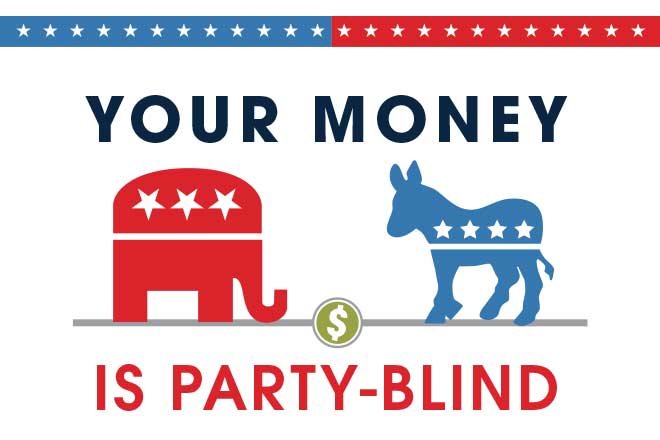With the election just a week away, investors may be nervous about what to expect if their candidate doesn’t win. The good news is, it might not matter either way; doomsday is not around the corner, at least not when it comes to your portfolio. Detalus, a wealth management firm, has provided the following information about presidential elections and portfolios based on data from the past.
divided vs. unified government
A divided government (one in which the president is of one party and Congress is dominated by the other) actually has produced better annualized stock market (DJIA) returns than those recorded when the government was unified. Based on data from 1901 to 2014, the figure during a divided government was 7 percent return; during a unified government, it was 4.6 percent.
favorability ratings
Over the past 55 years, the markets have performed best when a president’s approval rating was between 35 and 50 percent. Since the Kennedy administration, the sitting president has been viewed unfavorably by more than half the country 45 percent of the time! Congress’ approval rating has been worse.
political party & stock prices
Is it true that the market does best when a Republican is in the White House? No. Since 1945, the stock market (S&P 500) has produced average annualized returns of 15.1 percent when Democrats controlled the White House, 10 percent when Republicans did. These stats notwithstanding, some of the best annualized market performance occurred in the 1980s, when the Republicans controlled the White House.
translation, please!
The prevailing theory is, Stay Calm and Carry On. The factors that impact the economy are, in general, much bigger than which political party prevails. And a well-diversified portfolio is still considered a wise financial path.
All information compiled and provided by Detalus.








